[/caption]
To see one shorn shuttle is bad enough. Seeing two NASA space shuttles edged together and voluntarily gutted of their spaceflight capability for lack of Federal Government funding in the prime of their lives is beyond sad.
Two of NASA’s trio of space shuttle orbiters – Discovery & Endeavour – switched locations at the Kennedy Space Center (KSC) on August 11, moving them further down the path to eternal retirement and public exhibit at their future homes in museums. That’s far afield from their intended purpose to soar as spaceships of exploration to the High Frontier.
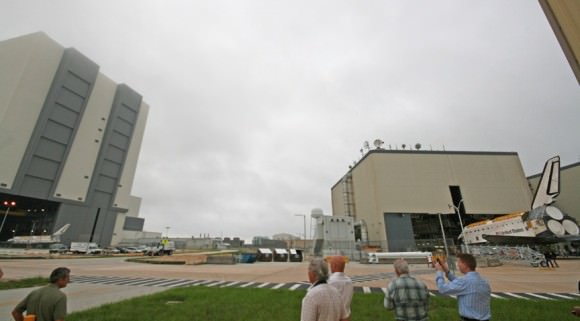
Discovery and Endeavour briefly met in a matchless nose-to-nose configuration for a roadside photo opportunity between the humongous Vehicle Assembly Building (VAB) and the processing hanger – dubbed the Orbiter Processing Facility – where the orbiters are prepared for flight.
Space Shuttle’s Discovery and Endeavour swapped places at KSC so that technicians could resume preparations towards the transition and retirement of shuttle Discovery – the first of NASA’s orbiters to be officially withdrawn from active duty spaceflight service.
First, Discovery was backed out of temporary storage from a high bay inside the VAB. Then Endeavour was towed out of Orbiter Processing Facility-1. Technicians then maneuvered the orbiters to a rendezvous point in between on the ground. Just imagine how grand this vista would have appeared in space.
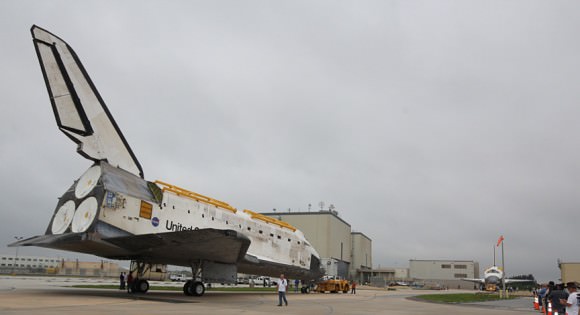
At last Discovery and Endeavour met for the truly sad nosy encounter of gaping holes where the forward reaction control thrusters once fired to meticulously maneuver the shuttles in orbit. Protective plastic sheeting meant to shield the empty thruster bay from FOD – or Foreign Object Debris – was in tatters and whipping wildly in the wind almost from the moment Discovery emerged from the VAB.
The rear ends of both orbiters looked like the main engines had been sawed off. Both orbiters have been stripped of their trio of mighty space shuttle main engines (SSME’s) and duo of bulbous Orbital Maneuvering System (OMS’s) pods for months of decommissioning work.
Discovery was then pulled into the Orbiter Processing Facility-1 (OPF-1) where the next step is to extract even more of her guts, namely the Auxiliary Power Units (APU’s) and associated systems for “safing” over the coming months. In April 2012, Discovery is scheduled to depart KSC forever and be flown off for permanent public display at the Smithsonian’s National Air and Space Museum Steven F. Udvar-Hazy Center in Virginia.
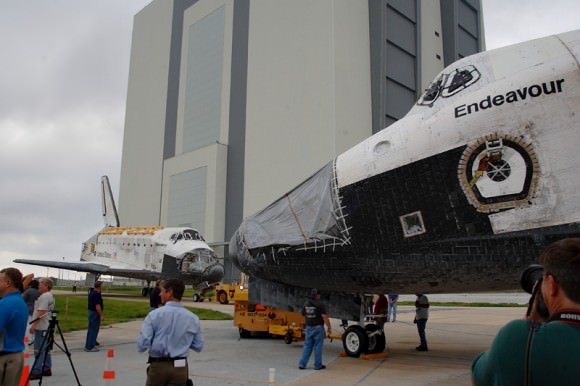
Endeavour was towed into the VAB for storage until October, when she will be moved into OPF-2 for further work to ready her for public display at the California Science Center in Los Angles sometime next summer.
Atlantis is next on the chopping block. And America retains zero indigenous capability for human spaceflight.
The situation likely won’t change for at least several years until one of the commercial providers launches a human rated “space taxi” to low earth orbit.
Read my continuing features here about Discovery, Endeavour and Atlantis
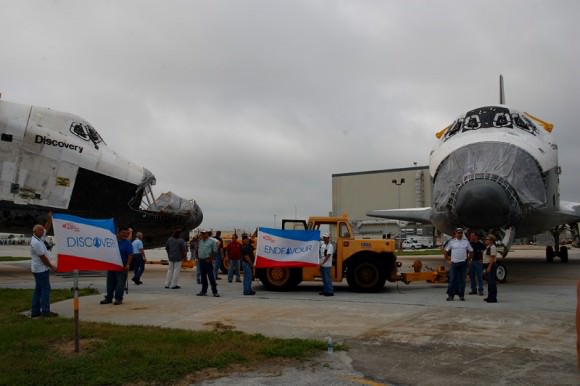
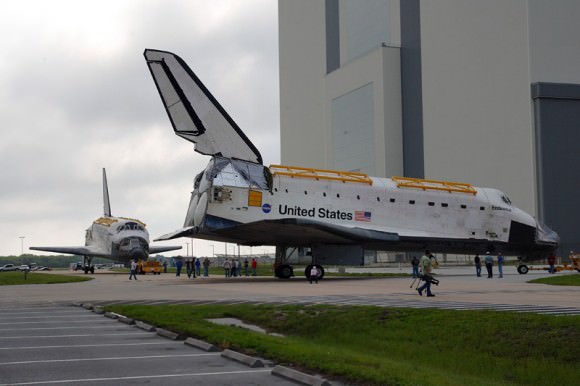

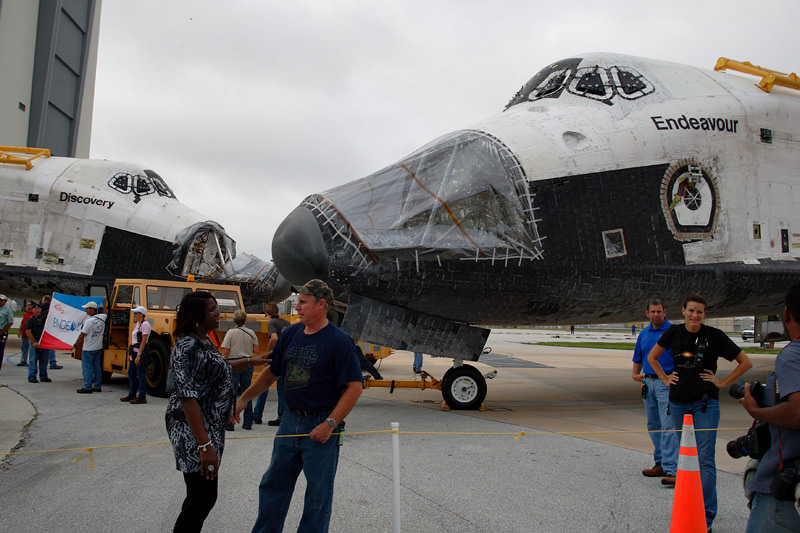
How incredibly sad.
Kennedy Space Center: Where America USED to go to the Moon, but can’t anymore
Kennedy Space Center: Where America USED to go to Orbit, but can’t anymore.
*cough*soyuz*cough*
*cough*Lunar Prospector*cough*
*cough*Lunar Reconnaissance Orbiter*cough*
*cough*GRAIL*cough*
*cough*LADEE*cough*
And that’s just the Moon.
NASA STANDS FOR “NOT ACHIEVING SPACE ANYMORE” VERY SAD!
I’m sorry, “for lack of Federal Government funding in the prime of their lives is beyond sad” is a bit of a pathetic attempt at a hook to get the reader into this story. These retiring Shuttles were one flight away from ending their lives in disaster. They were at the end of their serviceable lives and needed to be put to bed as they were.
are you an expert on Shuttle capabilites to say that??
RIP USA
Skeletons dont look good. Its the fleshy bits that make you turn your head.
RIP shuttles and a job well done
“in the prime of their lives is beyond sad”?
No, the orbiters should have been retired by the Nineties. (Though a Shuttle-C would have been handy- the first President Bush examined such launchers.) What’s sad is that they limped along this far, holding back actual exploration with their budget overruns and blown schedules.
and what kind of exploration would that be??? if there weren’t for the shuttles we wouldn’t have any space station, any hubble, etc.
they should have been retired ONLY when another vehicle was available, a better vehicle, but I don’t see any right now. if politicians weren’t so stupid in managing budgets then we could have real exploration.
Why, that would be BETTER exploration.
A basic review of budgets, let alone long-term mission planning, would tell you that two Shuttle-C launches (possibly even one, depending on Shuttle-C design) would have essentially built a capable space station. This is assuming that a space station actually benefits exploration, since you haven’t pointed out a single station result that could not have been replicated in other ways.
And Hubble, like the KH-series before it, was originally sized for Titan launch. Don’t try to feed me Shuttle servicing, either, since human servicing actually costs more than it saves. Commercial payloads came to that conclusion within a few short years of Shuttle ops. Hubble servicing would have instead paid for a Hubble II, and Hubble III (Hubble Origins Probe- designed for EELV launch). NASA, thus, came to that conclusion too- NO OTHER telescope was designed for servicing (human or otherwise) after 1991.
You’re somewhat right- the Shuttle should have been retired “when another vehicle was available, a better vehicle.” Except that vehicle is Atlas V, and to a lesser extent Delta IV, Ariane 5, or anything else for that matter. Those of us who actually build payloads flew on the Shuttle only when no other option was available.
I’m glad somebody referred to them as orbiters.